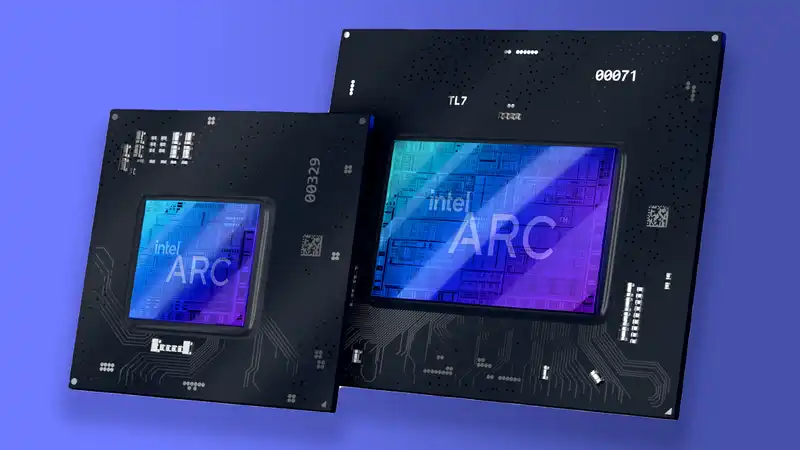According to a new report from Digitimes, Intel's next gaming GPU, Battlemage, will be manufactured on TSMC's 4nm silicon (via TechPowerup). This is a step up from the 6nm node used for existing Alchemist GPUs like the Intel Arc A770, and a natural progression. However, this is also a potential problem.
Both AMD and Nvidia's existing GPUs are already manufactured on similar TSMC silicon. Well, AMD's RDNA 3 GPUs like the Radeon RX 7800 XT and Nvidia's Ada Lovelace GPUs like the RTX 4070 use TSMC's N5 node. However, N5 and N4 are derivatives of the same basic node and are closely related. [The next big step after N5 is not N4, but TSMC's N3 nodes, N3B and N3E. Apple has been using N3B for a while but has already switched to N3E, and Intel's upcoming Lunar Lake laptop chip uses TSMC's N3B. In other words, N3 silicon is very much alive.
Similarly, AMD and Nvidia's N5 GPUs have been available for some time. In fact, we are gearing up for the next generation of GPUs from both companies. However, Intel's Battlemage GPUs have not yet been released. As it stands, there is no indication that Battlemage is really close to release, and at this rate it may not appear until next year.
Now, production nodes are not everything. However, it will greatly influence the generation of GPUs. It affects both the realistic number of transistors and has a huge impact on clock speeds.
Put another way, Intel's Battlemage GPUs on the TSMNC N4 node is not automatically a problem. However, depending on the timing of Battlemage's release, it could develop into an issue.
Suppose Battlemage is released early next year. At that point, the N4 process will allow it to compete directly with the aforementioned AMD and Nvidia GPUs in whatever segment Intel is aiming for in terms of transistor count, and thus be roughly equivalent in terms of shader count, render output, etc.
Of course, it is the overall transistor count or budget of the chip that determines how many features can be packed in; Intel's GPU architecture is clearly different from AMD's and Nvidia's, so counting up the number of shaders is not the end of performance comparison This is not to say that Intel's GPU architecture is the same as AMD or Nvidia's.
However, the biggest disadvantage for Intel is the number of transistors and thus hardware features. The problem is that both AMD and Nvidia will be launching new GPUs later this year.
We don't expect Battlemage to go ultra-high end, so if Nvidia announces a Blackwell-based RTX 5090 or RTX 5080 later this year, it definitely won't matter. But what about the RTX 5070 and 5070 Ti models that will follow in 2025, or AMD's rumored RDNA 4 GPUs, which are said to be aimed at the mid-range GPU market, where Intel's Battlemage is likely to be introduced Location.
Normally, we would expect both to make the full node jump, which would mean 3nm for TSMC. However, TSMC's move to N3 has proven to be quite problematic, which is why Nvidia's new Blackwell AI GPU is N4 instead of N3.
Perhaps the same can be said for AMD's new Zen 5 CPUs, including the Strix Point laptop APU. For now, it is not certain which node will be used for AMD and Nvidia's next-generation GPUs. However, given the large number of rumors, it is assumed that both companies will adopt some kind of N4 node.
If true, this could be Intel's saving grace. According to the early leaked roadmap, Battlemage was originally scheduled to appear early this year. If it appears in early 2025, it will be about a year later than originally planned. [If AMD and Nvidia adopt the N3 silicon, it will be very difficult for them to compete, as they will be up against more complex GPUs with more features. However, if both AMD and Nvidia have questioned the readiness of the N3 node and opted for the N4 node, then Battlemage may be able to compete with the likes of the Nvidia RTX 5070 and AMD 8800 XT, even if it is released a year later than originally planned.
Of course, it would be great if Intel could properly take the fight to AMD and Nvidia. A third player in the market would have a huge effect on competitiveness, and thus pricing. Keep an eye on it.
.

Comments